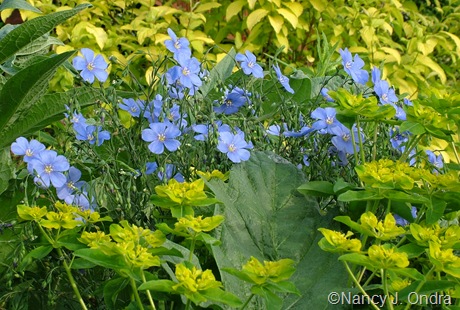 |
| Linum perenne ‘Sapphire’ |
Ages ago, I started the What’s in a Name series with an intro post (Part the First) and several color-themed posts: Through the Rainbow I, Through the Rainbow II, and White, Black, and Shades of Gray. I recently ran across the file I’d been keeping of interesting botanical names and realized that there’s plenty of great material left to explore. Granted, much nomenclature stuff clearly strays into the geek zone. It’s unlikely that you’ll ever need to know that the specific epithet amblyodon – as in Gaillardia amblyodon (maroon blanketflower) means blunt-toothed, or that skirrhobasis – as in Aphanostephus skirrhobasis (Arkansas lazy daisy) – means hard-based. But there are many other prefixes, suffixes, and epithets that can be more useful to know: in this case, if you’re looking for plants with certain form- and habit-related traits.
Herbaceous or Woody?
It’s easy to guess that a plant with annuus (or annua or annuum) in its name would probably behave like an annual in the garden. And it’s no stretch to figure out that common evening primrose (Oenothera biennis) acts like a biennial, or that Linum perenne and Arabis perennans are perennials.
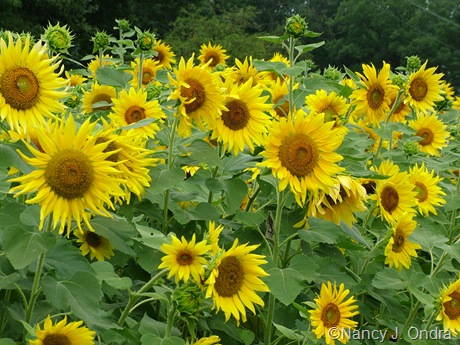 |
| Helianthus annuus |
Unfortunately, knowing these basics doesn’t always give you the right answer. Peppers, for example, are Capsicum annuum, but the plants can be perennial if not exposed to frost. Lunaria annua (money plant or honesty) usually behaves like a biennial, making leafy clumps the first year and then flowering, setting seed, and dying the second year. And then there’s Bellis perennis (English daisy), which is perennial but often grown as an annual or biennial, depending on where you live. Some of these quirks are just part of the fun of nomenclature.
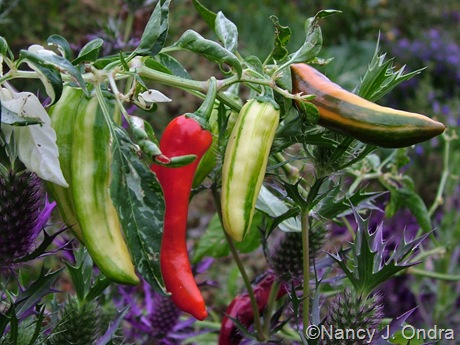 |
| Capsicum annuum ‘Fish’ |
Scientific names that indicate bulb-producing plants are fairly obvious: bulbiferus, bulbifera, and bulbiferum for bulb-producing plants, and tuberosus, tuberosa, and tuberosum for those with tubers or tuberous roots. Bulbosus, bulbosa, and bulbosum sound like they’d refer to bulbs, but they more often mean “bulb-like,” as in the bulb-like bases of variegated bulbous oat grass (Arrhenatherum elatius var. bulbosum ‘Variegatum’).
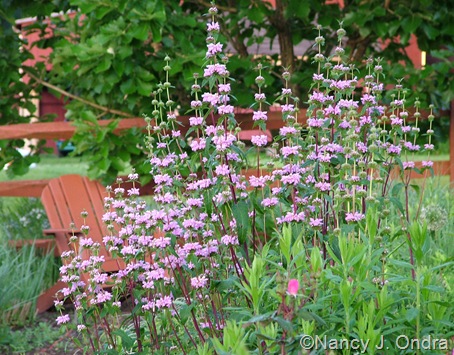 |
| Phlomis tuberosa ‘Amazone’ |
As a group, annuals, biennials, bulbs, and most traditional garden perennials are herbaceous, which means that they don’t produce woody stems – a characteristic typically indicated by the epithet herbaceus (or herbacea or herbaceum). Knowing that, it’s easy to guess that herbeohybrida – as in Calceolaria herbeohybrida (pocketbook plant) – refers to a hybrid between herbaceous species.
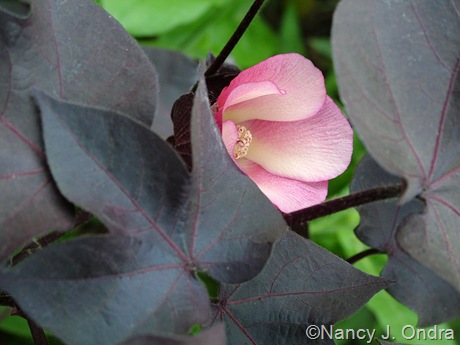 |
| Gossypium herbaceum ‘Nigrum’ |
For plants that have woody stems and/or a tree-like habit, there’s arboreus (and arborea and arboreum). There’s also arborescens (as in Hydrangea arborescens) for “becoming tree-like.”
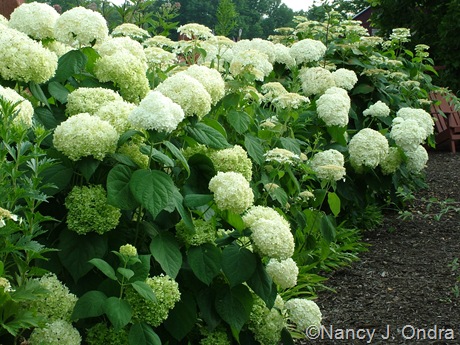 |
| Hydrangea arborescens |
Epithets related to shrubs include variations on the prefix fruti-, such as fruticosus, fruticosa, and fruticosum for shrubby; fruticans for becoming shrubby; frutescens for being shrub-like; and suffruticosus (-a, –um) for somewhat shrubby.
Vining and Climbing
The prefix that refers to a vine is simply vit-, as in viticella (small vine) and vitalba (white vine): think of Clematis viticella and Clematis vitalba. Other epithets generally related to vines include scandens (climbing) and volubilis or volubile (twining), as in Celastrus scandens (American bittersweet), cathedral bells (Cobaea scandens), and Aconitum volubile (a climbing monkshood).
 |
| Toxicodendron radicans |
The epithet radicans – stems that produce roots — isn’t specifically related to vines, but it appears in the names of several vines that produce aerial roots: among them, Toxicodendron radicans (poison ivy) and trumpetcreeper (Campsis radicans).
Standing, Sprawling, and Creeping
If you prefer plants that aren’t likely to need staking, look for names that include strictus (-a, –um) or rigidus (-a, –um), as in Penstemon strictus (stiff beardtongue or Rocky mountain penstemon) or Verbena rigida (stiff verbena). For long, straight shoots, there’s virgatus (-a, –um), as in Panicum virgatum (switch grass) and Penstemon virgatus (upright blue beardtongue).
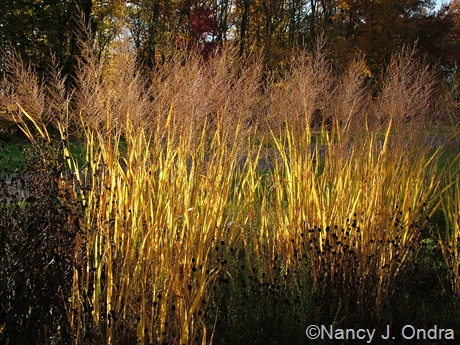 |
| Panicum virgatum ‘Dallas Blues’ |
The epithets erectus (-a, –um) and rectus (-a, –um) mean straight or upright, and they’re appropriate in the case of Potentilla recta (upright cinquefoil) and Haloragis erecta (upright seaberry), for example.
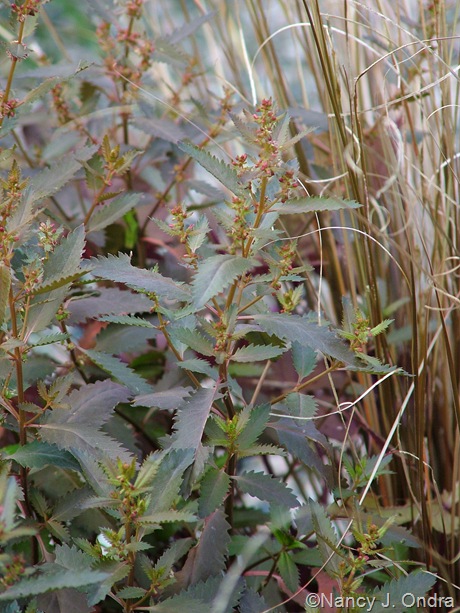 |
| Haloragis erecta ‘Wellington Bronze’ |
On the other hand, if you’ve ever grown Clematis recta (optimistically called upright clematis), you know that suberecta would be more appropriate, as it’s not really all that upright. Other epithets that can clue you in to weak stems or a sprawling growth habit include debilis, debile, and supinus (-a, –um) .
Looking for plants that might make good groundcovers? Check their names for epithets such as diffusus (-a, –um) , humilis and humile, procumbens, and prostratus (-a, –um). Some examples that come to mind here include Sarcococca hookeriana var. humilis (sweet box), Pachysandra procumbens (Alleghany pachysandra), and Veronica prostrata (prostrate speedwell).
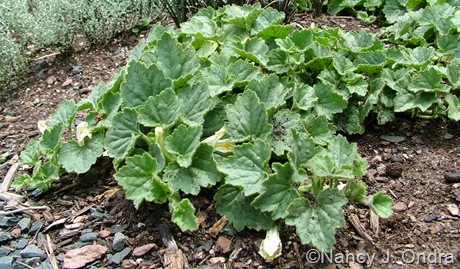 |
| Asarina procumbens |
A few more cues to low-growers: acaulis or acaule, meaning “without a stem”; caespitosus (-a, –um), for a dense, tufted habit; and compactus (-a, –um)…well, I don’t need to explain that one!
